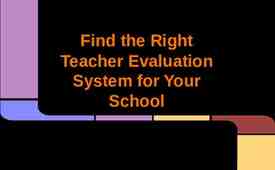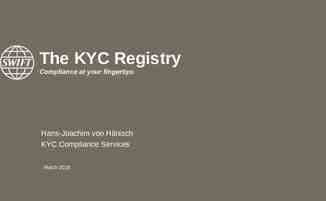Missouri Reach Tuition Waiver Program & MO Education and
24 Slides1.08 MB

Missouri Reach Tuition Waiver Program & MO Education and Training Voucher Program (ETV) Promoting education, training and career success for certain youth who experienced foster care or were adopted from DSS. February 2012

Foster Care to Success In late 2011, Orphan Foundation of America, officially changed its name to Foster Care to Success Foundation. (FC2S) www.fc2success.org Since 1981, FC2S has provided moral support, financial assistance, and workforce development coaching to youth involved with the foster care system. Annually, FC2S awards 15 million in scholarships and grants to help young people attend and complete postsecondary education and training programs and successfully enter the workforce. FC2S has administered the MO ETV Program since academic year 2006 and MO Reach since the program’s inception in 2011.

What is the Missouri Reach Program? Beginning in the 2011 fall semester, the Missouri Department of Social Services (MO DSS) and the Missouri Department of Higher Education (MDHE) will offer eligible youth a waiver that may be applied to offset the tuition and fees at Missouri colleges and universities. Funds will be sent directly to the school each semester. Eligible students remain eligible for other federal and state grants, including ETV.

What is the Education and Training Voucher (ETV) Program? The ETV Program provides grants up to 5000 per academic year to attend an accredited college or vocational/technical training program. Schools can be public or private and they can be in Missouri or out-of-state. The program is federally funded and state administered. ETV funding is a separate allocation from the state’s Chafee Independent Living award. ETV funds are for costs related to attending school and are first used for tuition, books and school fees. Once these expenses have been covered, funds may be used for qualified living expenses although it may be used to repay student loans incurred during the current academic year. Housing; School Supplies, including a Computer; Transportation; School Health Insurance; Dependent Care Expenses; and Study Abroad Expenses.

What is the Major Difference between the two programs? MO Reach - The State funding is limited - 18-25 students will receive funding in 2011-12 for tuition and fees at public colleges. MO ETV - The federal funds can be used for qualified living expenses after tuition has been paid. Eligible youth can attend a Missouri or out-ofstate, public or private institution. Approximately 350 students will receive and ETV grant in academic year 2011-12. 5

ETV Eligibility Youth currently eligible for Chafee services, this would include youth that have exited Children's Division custody at age 17 1/2 or later, up until the age of 21 Youth adopted or who obtained guardianship from foster care after their 16th birthday Youth participating in the ETV program on their 21st birthday shall remain eligible until age 23, provided they are making satisfactory progress as defined by the Children's Division

Tuition Waiver Eligibility Legal residents of Missouri, who have been in foster care or other residential care under the Department of Social Services, Children's Division, on or after: The day they graduated from high school or received a GED; or The day before their 18th birthday; or The day of their 14th birthday, if they were eligible for adoption. and Students must have graduated from high school or passed the GED examination within the previous three years Students must be accepted by or attending a Missouri state college or university, and have earned 60 credits prior to applying for MO Reach Students must apply before their 21st birthday

Program Similarities FC2S does not determine program eligibility. This is the role of the state. The applicant is responsible for completing his/her own Reach and ETV applications. They must provide their own contact information in the Student Contact section. Completing the online portion of the application is step one of a two step process. To remain eligible for the programs, students must maintain satisfactory progress towards earning a degree or certificate. Students in both programs receive ongoing support and guidance from FC2S. Pat Jacob coordinates the day to day services, Lynn Davis, Katie Cranford and Laura Adkins engage with youth. Care Packages, InternAmerica and career coaching Academic Success Coach Parenting Support

STEP ONE – Students complete an online application at www.statevoucher.org

STEP TWO - Required Form is Completed

How do students submit the required form? 1. Download and print the Application Packet which is first available just before a student applies. Additionally, the forms are attached to the welcome email applicants receive upon completing the online application. 2. Students complete the top portion of the Financial Aid Form and drops it off in the financial aid office which completes it and sends it to MO ETV via fax. IT’S THAT EASY. 3. Applicants review the Student Participation Agreement which outlines the program and clearly states what they must do to remain eligible for funding. This form is for reference only, it is not sent to MO ETV. 4. Student Budget - we do not require that they complete it to be funded, but we urge them to complete it and then we review it with the student on the phone. It is important that students understand what funding is available to them and how to manage those monies.

What is the Student Participation Agreement Form? The Student Participation Agreement articulates the expectations of the MO ETV Program. Students are expected to: Apply online and submit the Financial Aid Release Form each semester Request that an official transcript be sent to MO ETV after each semester Check their personal email account weekly for information from FC2S and ETV Update their contact information online on the Student Contact Form whenever it changes or at the start of a new semester Maintain a GPA of 2.0 or higher Comply with other program expectations that relate to them (including participation in the Academic Success Program) Reapply each July for the upcoming academic year.

How are ETV awards determined? Funding is awarded based on a student’s unmet financial need as per the Higher Education Act.* Unmet need is calculated by reviewing the school’s published cost of attendance less other financial aid the student will receive, such as a Pell grant, work study and scholarships. ETV funds should reduce student loan debt for recipients. The maximum ETV award is 5,000; however, not all students receive the maximum award amount. Financial aid cannot exceed the school/training program’s published cost of attendance, less other financial aid. Additionally, funding is allocated to meet the greatest need for those who are academically progressing. Visit www.ed.gov/policy for more information on the federal definition of “cost of attendance” or to review the Higher Education Act Sec. 201 of P.L. 107-133.

ETV Funding is made on a case-by-case Each student’s financialbasis need is reviewed, funding may vary from semester to semester. Students who drop or fail classes may not receive the same funding as those who are passing and meeting graduation requirements. Students who remain in care, and are not paying for housing may receive less than those who pay rent or have dorm charges. It is expected that students will contribute to their education. Most college students seek part-time or summer employment or have an on-campus job through the Work-Study program.

ETV Timeline July 1 – application for the fall semester is available online. Funding is allocated on a per semester basis. Many factors go into when students receive funding: Step 1) the online application is step one, Step 2) the submission of the financial aid form if need a transcript from the previous semester All students and schools are sent an ETV award letter detailing that semester’s grant. Funding sent directly to the school is paid first – tuition, fees and on campus housing. Book money is sent to students as early as possible in the semester. If a student requests and is eligible for a computer, this is will be sent to them as early as possible in the semester. Funds for living expenses are spaced out so students receive 2 or 3 checks, mid and late semester.

Encourage Students to Login to their Applications Students should login to their ETV applications on a regular basis. By doing this, they can: Update their contact information Check to confirm that their paperwork has been received by MO ETV & Reach Obtain information about check disbursements issued to them or to third parties on their behalf

Students can check on the status of their paperwork.

Students can view check disbursements made to them or a third party.

Many MO Students Can Graduate Without Incurring Debt - loans may not be needed: Students attending a community college who remain in care and pay no rent should NOT take out student loans. Between the Pell Grant (up to 5,500 annually), ETV funding and parttime work the student has sufficient funds to cover the estimated 4,000 needed for community college tuition, books, and fees. Any remaining funds should be used for approved living expenses such as transportation, food, etc. Students who remain in care but live in a dorm may need to take a student loan to pay for housing if the county or agency does not pay for on-campus housing. Students who pay for their own housing often need additional funds beyond the Pell & ETV. Mo Reach recipients will not borrow any money because their tuition will be covered and the Pell Grant and ETV funding will cover their Cost of Attendance.

Graduate Without Incurring Debt Students attending a private college should receive grant funding from the college in lieu of student loans. If the school does not offer sufficient grant funding the student should meet with the financial aid officer BEFORE ENROLLING to discuss their financial aid needs. If the student is expected to borrow heavily to attend the school, help the youth consider the pros & cons of attending a private college and assuming considerable debt for an undergraduate degree. Just ‘going to school, any school’ is not in a young person’s long term best interest. Public -State Schools Private - Harvard, William Woods University, For-Profit - Sanford Brown, Phoenix University, Trade Schools

For-Profit Schools (ex: Phoenix Univ., SANFORD BROWN COLLEGE, STEVENS INSTITUTE OF BUSINESS & ARTS and EVEREST UNIVERSITY-ONLINE) market themselves as a quick and easy path to a career. They are always much more expensive than the local community college and few have a good reputation with employers. 1)Credits from for-profits are not transferable. 2) The school will not offer work-study or donor or institutional grants or scholarships. 3) Students require the maximum in student loans to cover the tuition and fees. 4) Too often, these programs do not require a placement test to determine readiness for college level course work. Youth are registering for programs such as nursing, IT and education without the critical reading, writing or math skills necessary to do basic college level work. -- This is selling point many ETV applicants cite as the reason they chose a for-profit school. 22

For-Profit Schools Because youth are over 18 they can register &/or sign a contract for a program and sign loan documents obligating them to pay for the complete program. Unlike the community college which is a pay as you go (semester to semester) many for-profit schools offer 9, 18 or 24 month programs, attendees are obligated for the full program regardless of whether they complete the courses or clock hours. If you our your client would like to discuss the pros and cons of a particular school or program please call us. FC2S will help the young person sort out fact from fiction and find an affordable, positive path that can lead to success and career opportunities. 23

To Contact FC2S Staff: Pat Jacob (800) 585-7115 [email protected] Lynn Davis, [email protected] InternAmerica & Community Outreach Laura Adkins, [email protected] Student and FC2S staff support 571 -203-0270 www.statevoucher.org







